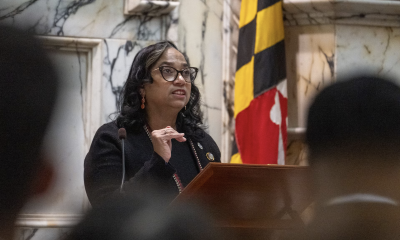a&e features
John Waters teases ‘Polyester’ reissue
Baltimore native claims no children were hurt making his films
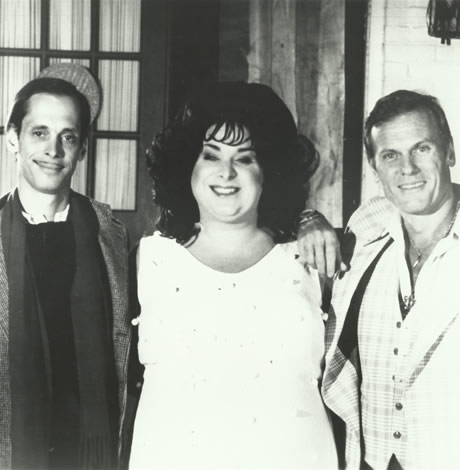

John Waters, Divine and Tab Hunter on the set of ‘Polyester’ in 1981. The camp classic will be reissued in a deluxe DVD and Blu-ray edition by The Criterion Collection in 2019. (Blade archives photo courtesy New Line Cinema)
“Polyester” is the next John Waters movie that will be released on DVD and Blu-ray and the Baltimore-based filmmaker is hoping an updated version of his Odorama card will go along with it.
“I want to add the 11th Odorama odor: Wig odor,” Waters told an audience in New York City at a Q&A last month. “glue and sweat.”
Appearing at the IFC Center for sold-out screenings of “Hairspray” and “Female Trouble,” Waters confirmed that “Polyester” will be restored and distributed in 2019 as part of The Criterion Collection, following re-releases of “Multiple Maniacs” and “Female Trouble.”
“They are going to do ‘Polyester’ next year, so I am excited about that,” Waters said. “They are a Class A company. I think they do an absolutely beautiful job.”
“Polyester,” starring Divine and Tab Hunter (sadly, both now dead), tells the story of suburban house frau Francine Fishpaw (Divine), stuck in a dreary marriage, and how her life changes after she meets dashing Todd Tomorrow (Hunter). Filmed in Greater Lutherville for $300,000 and released in 1981, it was part of Waters’ suburbia-based “Trash Trilogy,” along with “Hairspray” and “Cry Baby.”
“Polyester” became known for its Odorama card, which contained 10 scents that movie goers could scratch and sniff as they watched. They ranged from air freshener and roses to smelly sneakers and flatulence. Inspired by the Smell-O-Vision device from the 1960 movie “Scent of Mystery,” the Odorama card was touted with the lines: “It’ll blow your nose!” and “Smelling is Believing.”
Other original smells were: model airplane glue, pizza, gasoline, skunk, natural gas and new car smell. Glue was taken off the card when a LaserDisc version was released.
“Polyester” received positive reviews from critics such as The New York Times’ Janet Maslin.
“Ordinarily, Mr. Waters is not everyone’s cup of tea, but ‘Polyester’ … is not Mr. Waters’ ordinary movie,” Maslin wrote. “This time, the comic vision is so controlled and steady that Mr. Waters need not rely so heavily on the grotesque touches that make his other films such perennial favorites on the weekend Midnight Movie circuit. Here’s one that can just as well be shown in the daytime.”
Known as the “Pope of Trash” and “Sultan of Sleaze,” the openly gay filmmaker came to New York to celebrate the 30th anniversary of “Hairspray” and the 2018 re-release of “Female Trouble.” He had appeared the week before at a “Hairspray” screening and cast reunion in Los Angeles.
At the New York event, moderated by the entertainment writer Michael Musto, Waters was joined by Leslie Ann Powers, the actress who played Penny Pingleton; Joann Havrilla, who played Prudence Pingleton; and Holter Graham, who played I. Q. Jones. Waters said he hadn’t seen Powers in decades and thought she was hiding in the “‘Hairspray’ witness protection program.”
The filmmaker said “Hairspray,” which follows teenager Tracy Turnblad’s efforts to integrate a TV dance show in the 1960s, is “the gift that keeps on giving,” because there have been so many versions of it.
“I say it’s radical because it snuck up on Middle America,” Waters said. “Even racists like it. I’ve been paid to write the sequel two times. There’s been talk of ‘Hairspray on Ice,’ ‘Hairspray in Space.’ What’s left?”
The running joke in the movie is that the 300-pound drag actor Divine, who died in 1988 and played Tracy’s mother Edna, is actually a man but no one knows it except the audience.
In real life, Divine “had no desire to be a woman,” Waters said. “He wanted to be Godzilla. …We created Divine to scare hippies.”
Born Harris Glenn Milstead, Divine off-screen was nothing like Divine onscreen, Waters noted. “He was a kind, gentle man who was a pothead and liked to eat.”
Though he and Divine were good friends, Waters said, Divine eventually wanted to do more than John Waters movies, especially after the scene in “Pink Flamingos” where he ate dog poop.
“He got weary of being with me … because people couldn’t get over the whole eating-shit thing,” Waters said. “He got so sick of talking about that. … He wanted to get away from me and do things without me.”
During a separate Q&A session following the “Female Trouble” screening, Waters reported that none of the child actors in his movies was traumatized by the experience.
“All the kids in my movies turned out fine,” he said. “The little girl that I locked in a refrigerator (in Desperate Living)? She’s fine. … There was nothing weird or anything. They memorized their lines. They’re fine.”
“Female Trouble” focuses on Dawn Davenport (Divine), who turns to a life of crime after she didn’t get cha cha heels for Christmas, kills her daughter Taffy and ends up frying in the electric chair.
Waters said he originally wanted Divine to play both the mother and daughter but concluded it wouldn’t work because of Divine’s age. Instead, he had Divine play both the mother and the father, which means Divine rapes himself.
The famous line delivered by the late Edith Massey: “the world of the heterosexual is a sick and boring life,” had a double purpose aside from its comedic punch, Waters said.
“That was market testing. I wanted to see how many gay people were in the audience.”
Ever the name dropper, Waters said he loves the director Ingmar Bergman because “he had the first puke scene.” He said he met Elizabeth Taylor toward the end of her life and “she looked like Divine.” He said he considered casting Roseanne Barr as the lead in “Serial Mom,” back when she was “a complete liberal,” but eventually chose Kathleen Turner.
Waters said he used to visit courtrooms during criminal trials but can’t anymore “because people recognize me.” He disclosed that Dawn Davenport’s character was inspired in part by Alice Crimmins, a New York woman and Casey Anthony forerunner who was convicted of killing her two children in 1965.
Musto said he had a treat for Waters. “Big surprise,” he said. “Alice is here with us tonight!”
The conversation eventually came down, as it often does, to cha cha heels and Christmas.
Musto asked Waters if the dialogue about them — “Those aren’t the right kind. I told you cha cha heels, black ones!” and “Good girls don’t wear cha cha heels” — aren’t the most quoted lines from a John Waters movie.
Waters said the scene in which the Christmas tree falls over on Dawn’s mother was inspired by a time when a Christmas tree fell on his grandmother.
“I remember the handyman screaming, the maid crying and me being, ‘Is my present hurt?’ She wasn’t injured, but I was obsessed by it.”
He said a lot of his fans seem to have stories about falling Christmas trees.
“It’s usually dogs or liquor.”
Waters said his family always had real trees when he was growing up, never artificial, and his mother frowned on those who decorated with multi-colored lights.
“She was all white lights,” he said. “She would go around the neighborhood and look in windows” and make disparaging remarks about families with multi-colored lights.
Waters marvels that his movies are so embraced today since mainstream studios shunned them initially.
The Criterion Collection, which will distribute “Polyester,” is affiliated with Warner Brothers, one of the largest entertainment companies in America.
“Warner Brothers distributes all of mine now,” Waters said. “Who would have imagined?”
More John Waters fun!
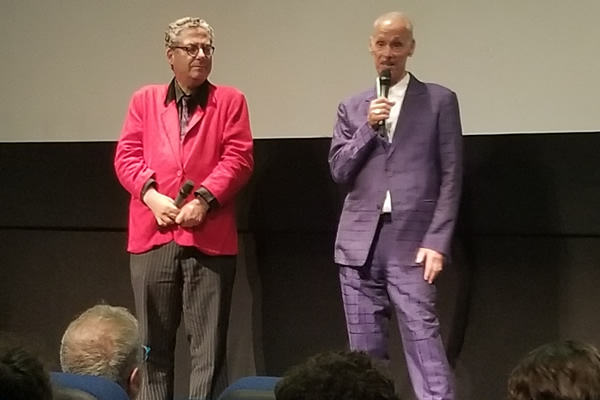
Michael Musto, left, with John Waters in New York on July 27. (Photo by Ed Gunts)
He’s no longer making new movies but there are still ways to enjoy the John Waters sensibility.
“John Waters: Indecent Exposure,” billed as the “first major retrospective of Baltimore native John Waters’ visual art,’ opens Oct. 7 at the Baltimore Museum of Art (10 Art Museum Drive, Baltimore) and runs through Jan. 6. The show will “examine the unapologetic cultural force’s influential career through more than 160 pieces of his work dating back to the early 1990s.” Details at artbma.org.
Waters makes his annual trek to the Birchmere (3701 Mount Vernon Ave., Alexandria) on Thursday, Dec. 20 for “A John Waters Christmas,” his comedy stand-up show. Tickets are $55. Details at birchmere.com.
a&e features
Your guide to D.C.’s queer New Year’s Eve parties
Ring in 2026 with drag, leather, Champagne, and more

With Christmas in the rear view mirror, we can turn our attention to ringing in a much-anticipated New Year with a slew of local LGBTQ parties. Here’s what’s on tap.
Pitchers
This spacious Adams Morgan bar is hosting the “Pitchers’ Perfect New Year’s Eve.” There will be a midnight Champagne toast, the ball drop on the big screens, and no cover, all night long. The bar doesn’t close until 4 a.m., and the kitchen will be open late (though not until close). All five floors will be open for the party, and party favors are promised.
Trade
D.C.’s hottest bar/club combo is leaning into the Shark motif with its NYE party, “Feeding Frenzy.” The party is a “glitterati-infused Naughty-cal New Year’s Even in the Shark Tank, where the boats are churning and the sharks are circling.” Trade also boasts no cover charge, with doors opening at 5 p.m. and the aforementioned Shark Tank opening at 9 p.m.. Four DJs will be spread across the two spaces; midnight hostess is played by Vagenesis and the two sea sirens sensuously calling are Anathema and Justin Williams.
Number Nine
While Trade will have two DJs as part of one party, Number Nine will host two separate parties, one on each floor. The first floor is classic Number Nine, a more casual-style event with the countdown on TVs and a Champagne midnight toast. There will be no cover and doors open at 5 p.m. Upstairs will be hosted by Capital Sapphics for its second annual NYE gathering. Tickets (about $50) include a midnight Champagne toast, curated drink menu, sapphic DJ set by Rijak, and tarot readings by Yooji.
Crush
Crush will kick off NYE with a free drag bingo at 8 p.m. for the early birds. Post-bingo, there will be a cover for the rest of the evening, featuring two DJs. The cover ($20 limited pre-sale that includes line skip until 11 p.m.; $25 at the door after 9 p.m.) includes one free N/A or Crush, a Champagne toast, and party favors (“the legal kind”). More details on Eventbrite.
Bunker
This subterranean lair is hosting a NYE party entitled “Frosted & Fur: Aspen After Dark New Year’s Eve Celebration.” Arriety from Rupaul Season 15 is set to host, with International DJ Alex Lo. Doors open at 9 p.m. and close at 3 p.m.; there is a midnight Champagne toast. Cover is $25, plus an optional $99 all-you-can-drink package.
District Eagle
This leather-focused bar is hosting “Bulge” for its NYE party. Each District Eagle floor will have its own music and vibe. Doors run from 7 p.m.-3 a.m. and cover is $15. There will be a Champagne toast at midnight, as well as drink specials during the event.
Kiki, Shakiki
Kiki and its new sister bar program Shakiki (in the old Shakers space) will have the same type of party on New Year’s Eve. Both bars open their doors at 5 p.m. and stay open until closing time. Both will offer a Champagne toast at midnight. At Kiki, DJ Vodkatrina will play; at Shakiki, it’ll be DJ Alex Love. Kiki keeps the party going on New Year’s Day, opening at 2 p.m., to celebrate Kiki’s fourth anniversary. There will be a drag show at 6 p.m. and an early 2000s dance party 4-8 p.m.
Spark
This bar and its new menu of alcoholic and twin N/A drinks will host a NYE party with music by DJ Emerald Fox. Given this menu, there will be a complimentary toast at midnight, guests can choose either sparkling wine with or without alcohol. No cover, but Spark is also offering optional wristbands at the door for $35 open bar 11 p.m.-1 a.m. (mid-shelf liquor & all NA drinks).
a&e features
Local, last-minute holiday gift ideas
Celebrate the season while supporting area businesses

The DowntownDC Holiday Market is bustling. Union Station is decked out with its annual Christmas tree. Washingtonians have wrapped their houses and apartment balconies with festive lights and holiday decorations. The holiday season is here. And with stockings to fill and empty space under the tree, Washington’s local shops and artists have plenty to offer.
Show your LGBTQ and D.C. pride with the Washington Blade’s annual holiday gift guide.
To embrace the holiday buzz: The Blanco Nwèl cocktail from Alchy Cocktails. This Caribbean eggnog is one of Alchy Cocktail’s seasonal holiday cocktails. The flavor profile is similar to coquito, a traditional Puerto Rican Christmas drink with a coconut base. As a queer and Caribbean-owned business, Alchy Cocktails has been based out of Washington since 2021. Blanco Nwèl is available in both cocktail ($24) and mocktail ($12) online and at a variety of holiday markets, including the Tingey Plaza Holiday Market, the Flea Market at Eastern Market, Union Station’s Main Hall Holiday Market, and more. ($24)
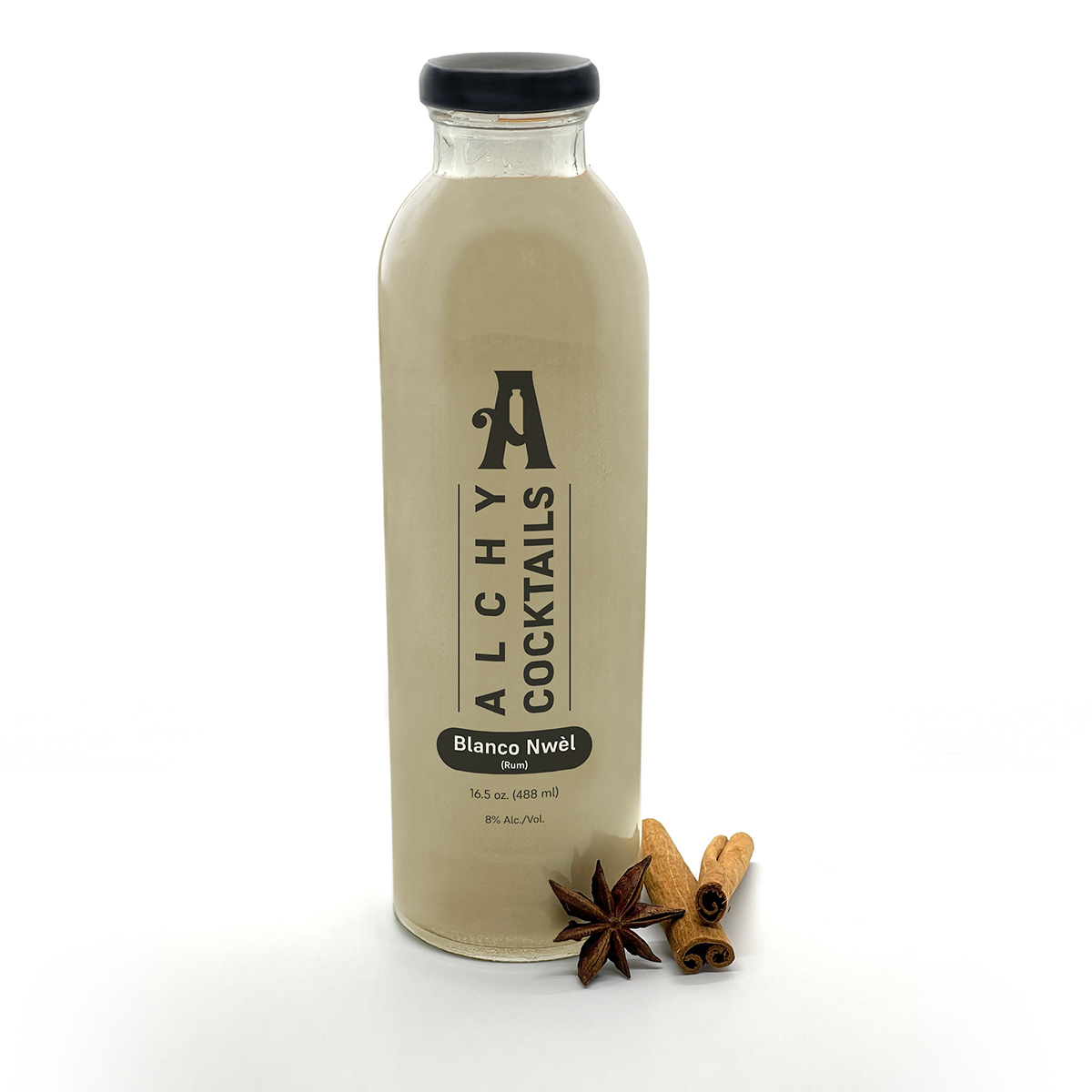
A spicy bite: Gordy’s Cajun Okra from Salt and Sundry. These spicy, tangy pickles pull on Southern Cajun-style flavors, packing a punch with paprika, cayenne, and more. Gordy’s is an LGBTQ-owned and Washington-based brand, making this gift an opportunity to support a local LGBTQ business straight from the jar. This pantry staple is available on Salt & Sundry’s website and at its locations in Union Market, Logan Circle, and its Georgetown holiday pop-up store. ($14)
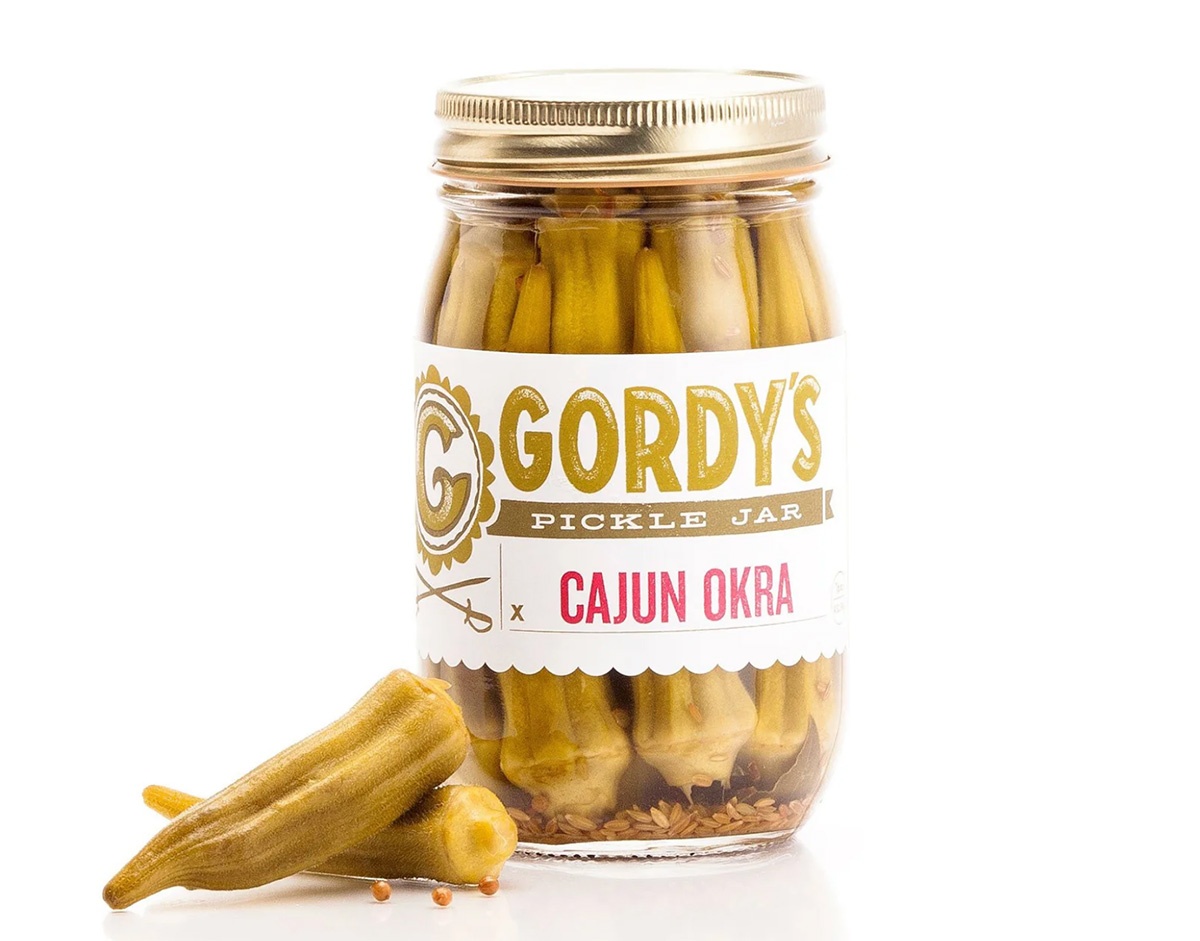

To celebrate Washington pride: The DC Landmark Tote Bag from The Neighborgoods. Native Washingtonians, visitors, friends and family alike will find something to love about this Washington-themed tote bag. Food trucks, the 9:30 Club, the Metro logo and pandas from the National Zoo are just some of the city’s landmarks depicted across the tote in a red, white, and blue color palette. The tote is a part of the DC Landmarks collection, which donates 10 percent of its sales to the American Civil Liberties Union. The Neighborgoods itself is a local, woman-owned business built out of a passion for screen-printing in 2013. The 100 percent cotton canvas tote is for sale online or at the DowntownDC Holiday Market. ($22)
To give friends and family their flowers: The Flowers Bandana from All Very Goods. This 100 percent cotton bandana was designed in Washington and hand printed in India. Its uniqueness comes in being covered with the faces of Black women, representing a “love letter to all women but especially Black women,” according to All Very Goods. The Black woman-owned and operated business, based out of Northwest Washington, has a mission to celebrate diversity and representation through its products. The bandana intends to give Black women their “flowers.” The Flowers bandana is available for purchase online. ($24)
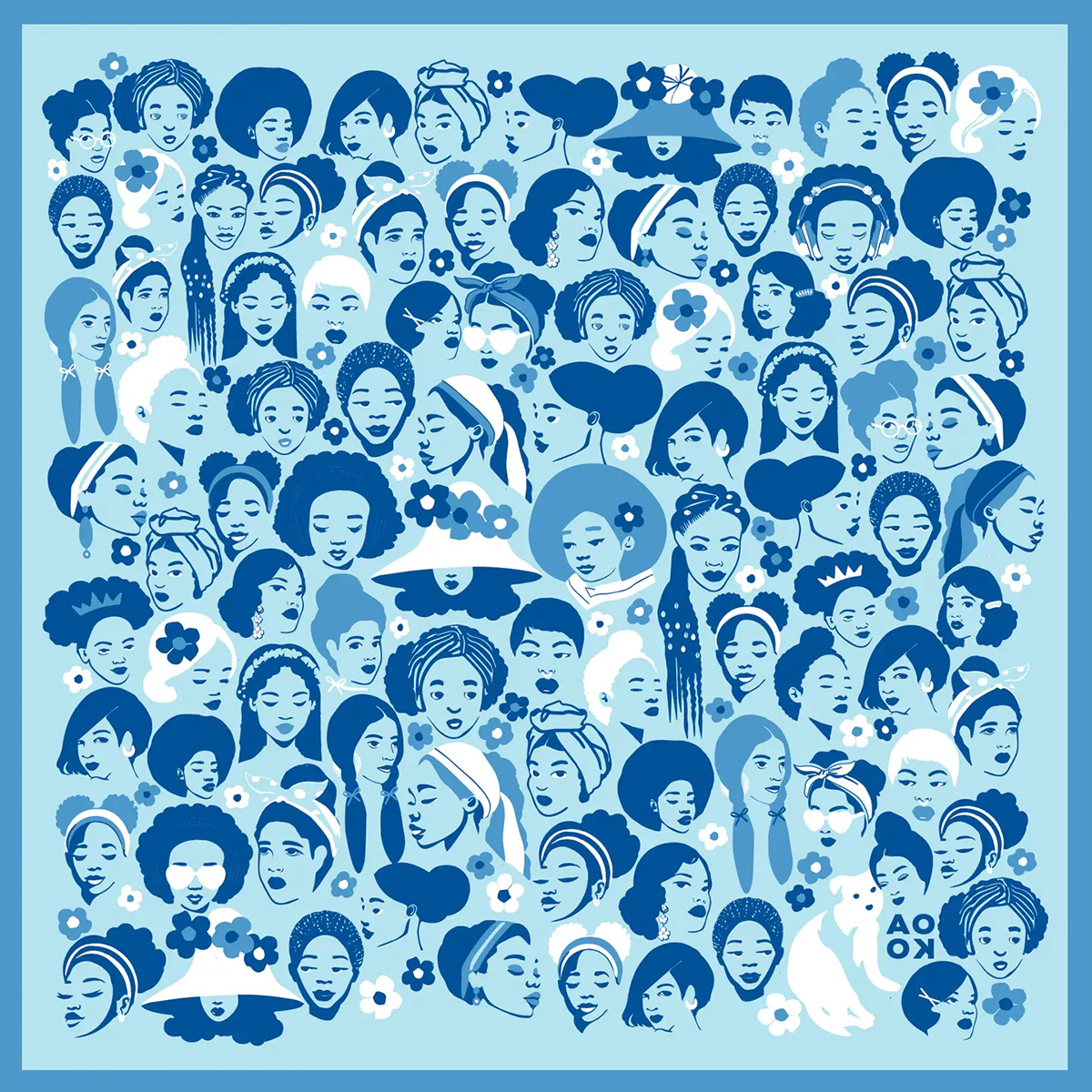
To unlock culinary creativity: The Curious Chef Gift Collection from Each Peach Market. This customizable collection of kitchen oddities — ranging from tinned fish to chili oil — is a quirky gift for the most inventive chefs. The collection is available in a Standard Santa, Extra Goodies and Super Holiday Size for up to $165. The Washington-based market, founded in 2013, permits customers to make the collection special by specifying what unique ingredients are packaged, including products made by local or LGBTQ brands. Each Peach Market offers assembly and pick up in-person at its Mount Pleasant shop and also offers local delivery and nationwide shipping via its website. ($85)
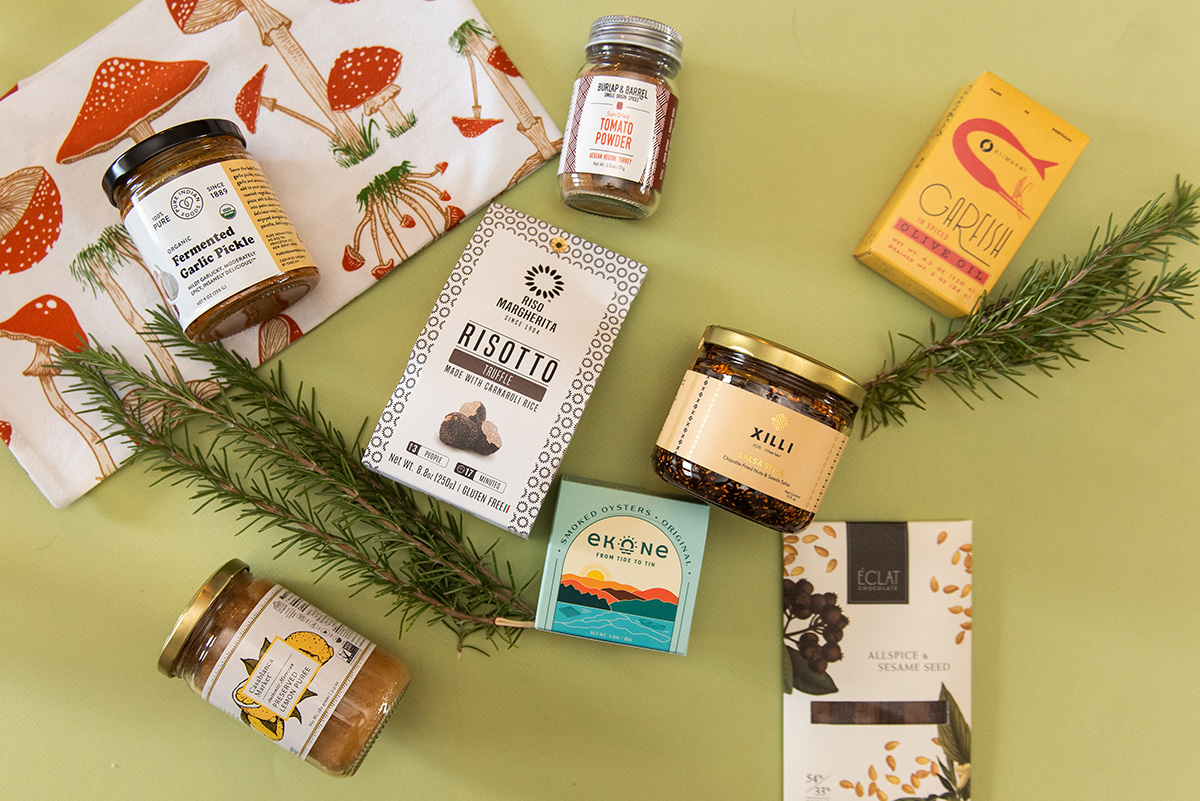
To give a touch of sweetness: The DC Landmark Chocolate Covered Oreo Holiday Cookies from Capital Candy Jar. Wrapped in a festive red bow, this box of nine cookies embraces love for Washington and the holiday season in one. Among the dark and milk chocolate covered cookies are images of the U.S. Capitol, the White House, the Lincoln Memorial, the Jefferson Memorial and festive hollies. The treat, packaged in a Hill East facility just a few blocks from the Capitol, is available for purchase online and at the DowntownDC Holiday Market. ($23.95)

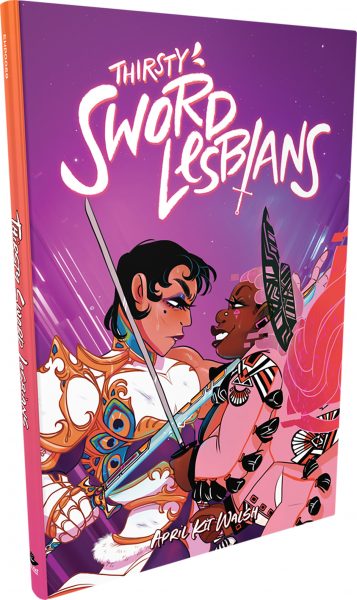
To celebrate queer gaming: Thirsty Sword Lesbians from Labyrinth Games & Puzzles. This roleplaying game embraces lesbian culture by unlocking a world of swords, romance, and battle. Ideal for group settings, the book presents a system of world building and character identities that are best brought to life by creative minds. Labyrinth, which has been a local Washington business for more than 15 years, celebrates non-digital fun through games and puzzles that connect the community. This gift is offered online and at Labyrinth’s Capitol Hill location. ($29.99)
To make a bold statement: The “Resist” T-shirt from Propper Topper. This locally screen-printed black tee features the Washington flag designed within a raised fist, symbolizing both Washington pride, and political resistance. The shirt is made exclusively by Propper Topper, a local Washington business that evolved from a hat shop to a gift store since opening in 1990. The tri-blend unisex shirt is available both for pickup at Propper Topper’s Cathedral Heights location and shipping via the online site. ($32)
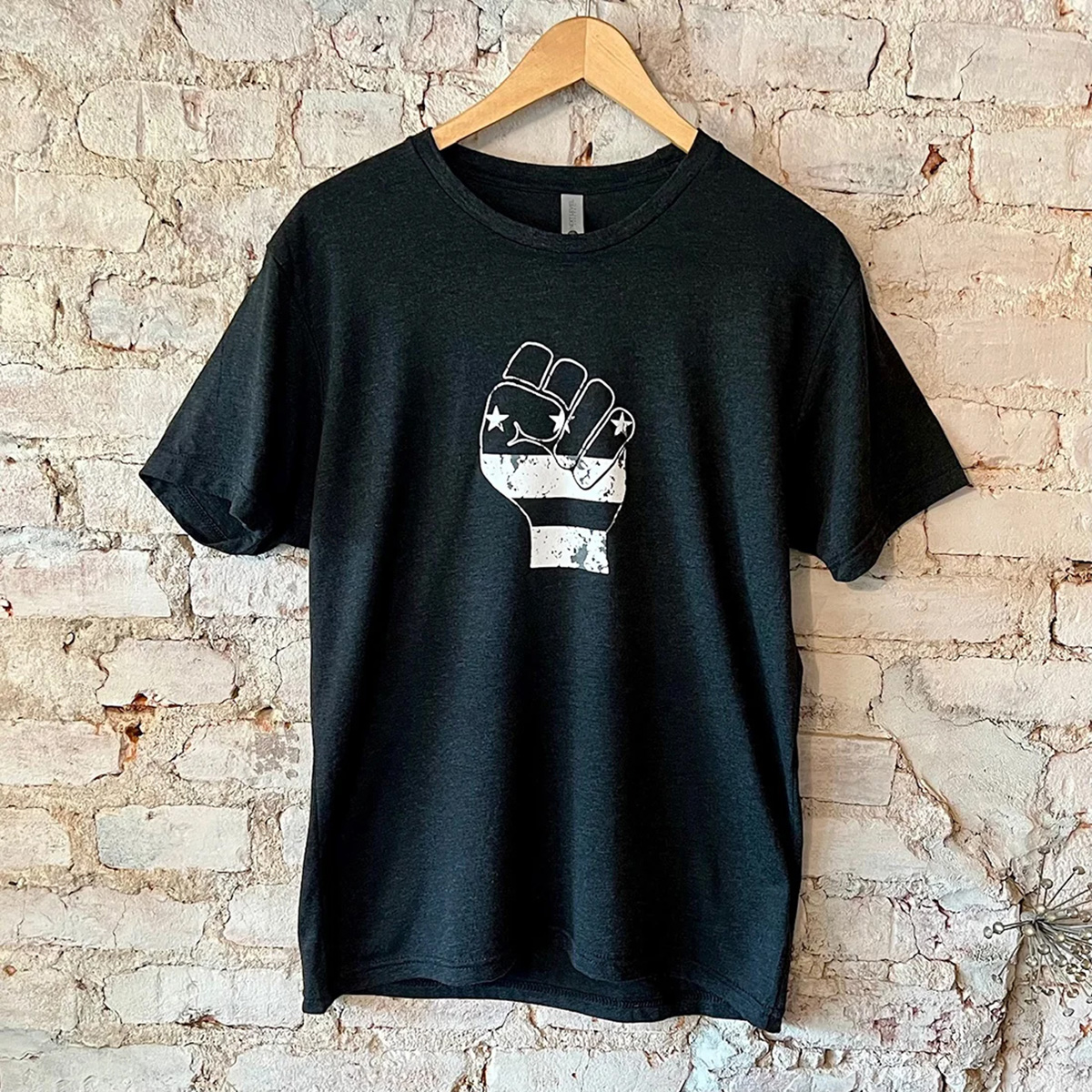
To keep it c(g)lassy: The Glass Ball earrings from Blue Moon Aquarius. Gifting can rarely go wrong when it comes to a new pair of earrings. The unique statement earrings — made of polymer clay, glass, and 18k gold plating over surgical steel — are hand cut, sanded and assembled in Washington, meaning each set is unique. Blue Moon Aquarius, a local brand, is known for its small batch jewelry and home decor designed with clay materials. Available in oxblood, hunter green, lavender, and bluestone color palettes, these earrings are available for purchase on Blue Moon Aquarius’ website and at the DowntownDC Holiday Market. ($48)
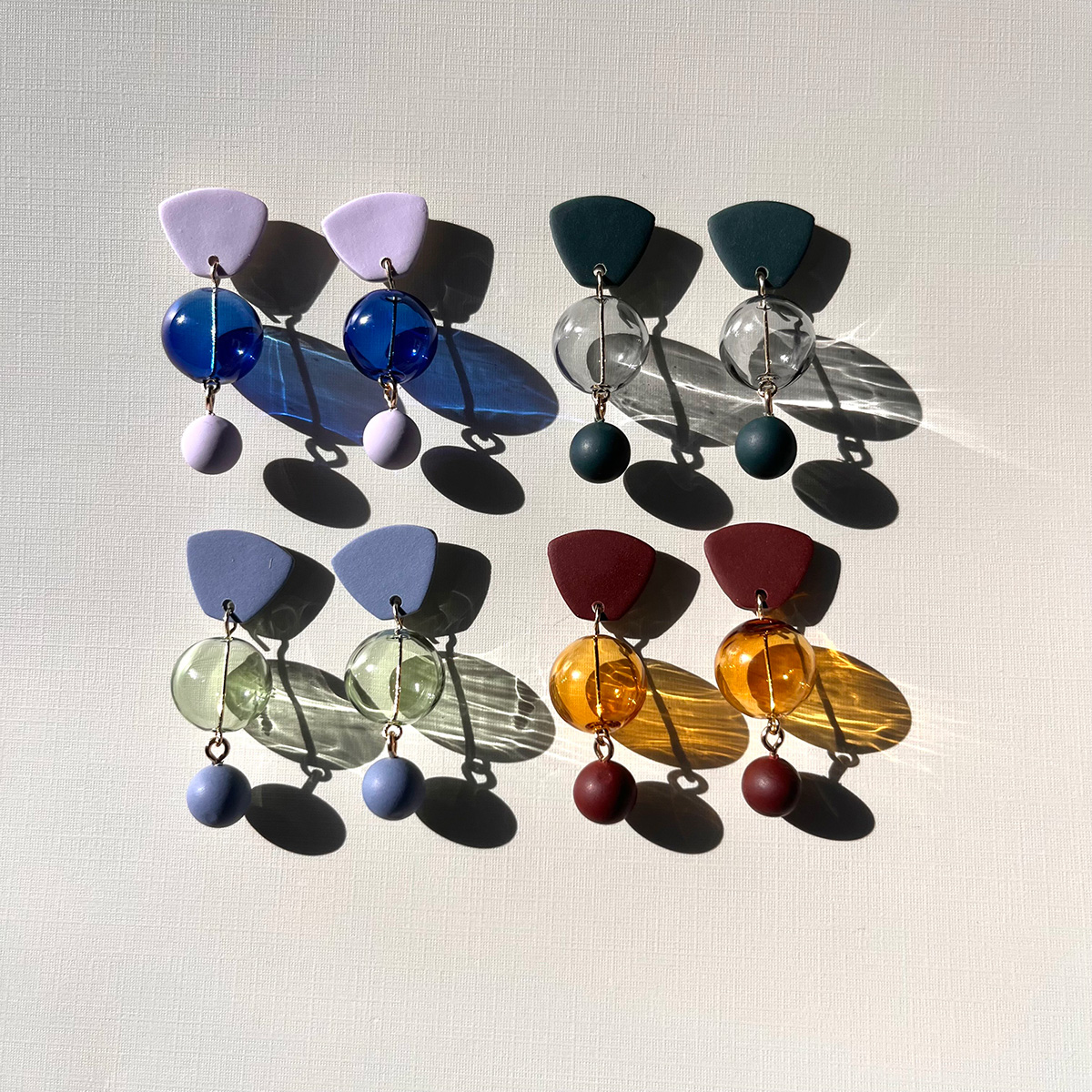
To elevate a holiday tea or charcuterie party: The Honey Flight: Tea Lover’s Selection from BannerBee. This local honey company presents the ideal gift to make cozying up with a cup of tea slightly more special. The Honey Flight contains three types of raw wildflower honey infused with fair trade Ugandan vanilla bean, chai spices, and locally sourced lemon thyme herb. The gift is also an opportunity to uplift a family company based in the Mid-Atlantic that offers all-natural, sustainable products. The flight is available online, at the DowntownDC Holiday Market or at the Arlington Courthouse and Dupont Farmers’ Markets. ($36)
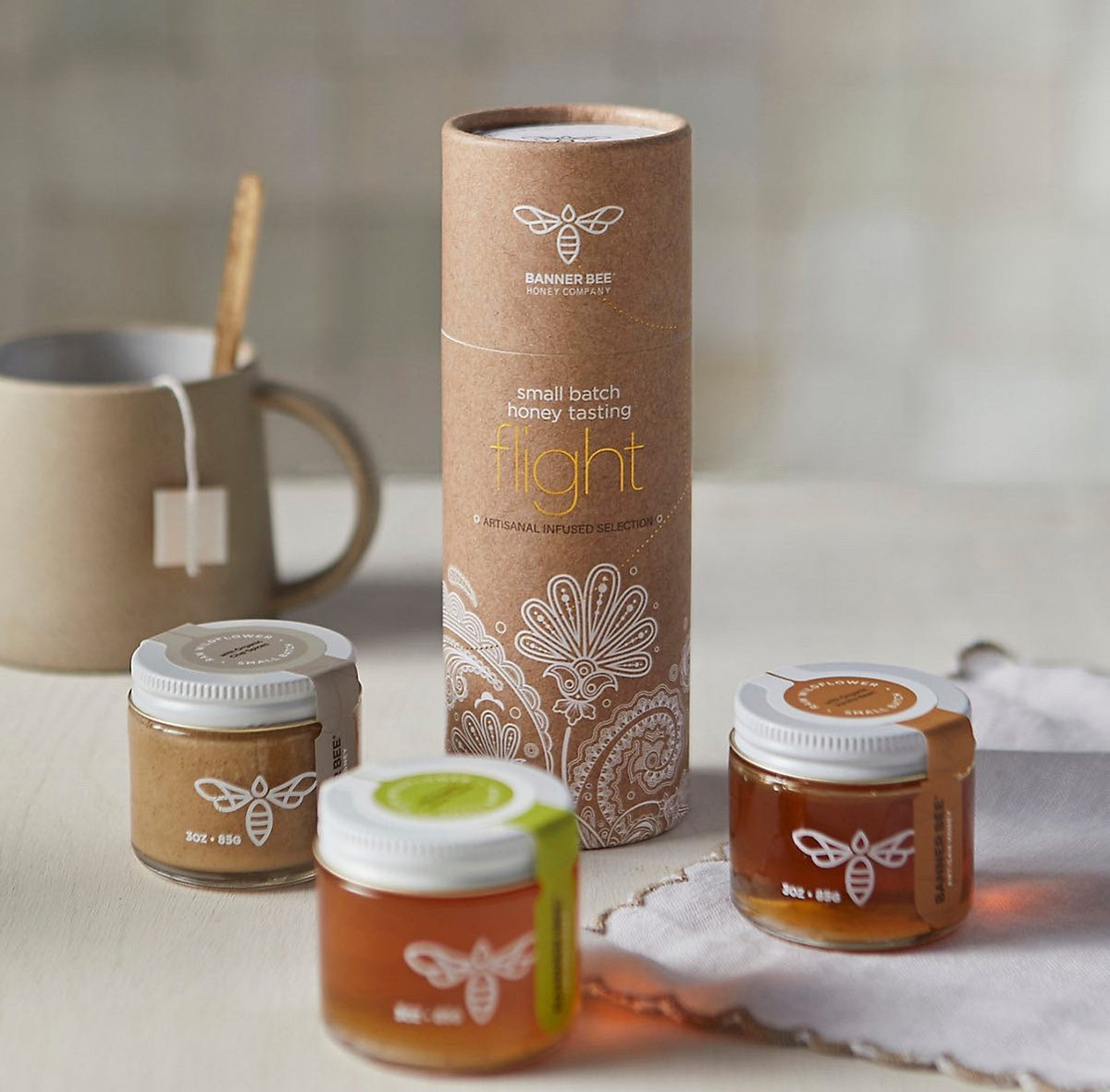
For Baltimore shoppers: If you’re in Charm City, don’t miss Balston Mercantile, opened by a gay couple in June. Their gorgeous shop in the Hampden neighborhood offers an array of unique, upscale finds, from barware and artwork to cookbooks and home decor and more. (849 W. 36th St.)
a&e features
Have yourself a merry John Waters Christmas
Annual holiday show returns to Alexandria and Baltimore
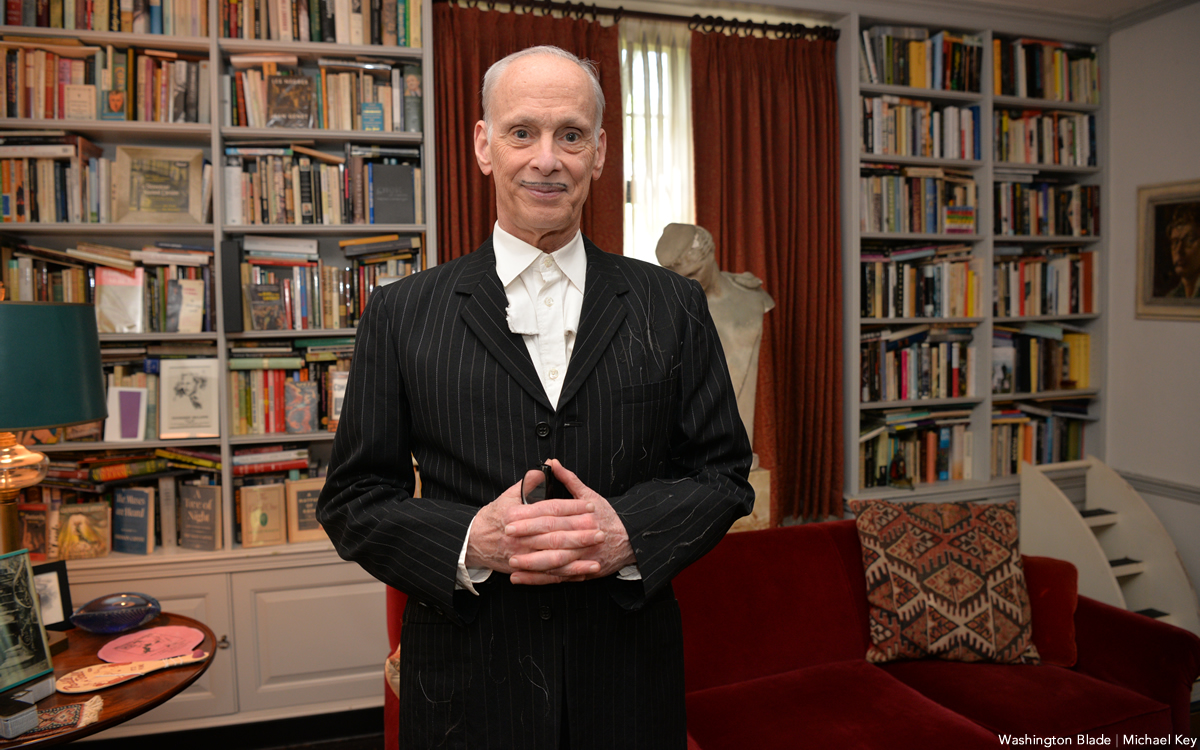
When it comes to iconic Christmas scenes in movies, none can top the tree-toppling tantrum thrown by cha-cha heels-deprived Dawn Davenport in John Waters’s fifth full-length feature “Female Trouble” from 1974. Therefore, it’s not surprising that Waters continues to make art out of Christmas, performing his spoken word Christmas tour in cities across the country. Waters has even more reason to celebrate with the release of his new red vinyl 7” single, a cover of Little Cindy’s “Happy Birthday Jesus (A Child’s Prayer)” on the A-side, and “A Pig Latin Visit From St. Nicholas” on the B-side. If you’re still looking for unique Christmas gifts, consider this record. As always, John was kind enough to make time for an interview in advance of his tour dates.
BLADE: John, in preparation for this interview with you, I went back and listened to Little Cindy’s original rendition of “Happy Birthday Jesus (A Child’s Prayer)” on your “A John Waters Christmas” CD.
JOHN WATERS: One thing I did, if you notice, I make the same stumble in my recording that she did in the original.
BLADE: It sounded to me like she got choked up.
WATERS: No, I think she just stumbles over a word, so I stumbled over the same word. It’s appropriation, insanely.
BLADE: Is this a song you first became aware of in your youth or when you were an adult?
WATERS: When I was doing the Christmas album, I had this friend named Larry Benicewicz. He was kind of my idea man with music. He knew every single old record. I would say to him, “Weird Christmas songs,” when we were doing a soundtrack, or a song about bears, or a song about this, and he would give me all these tapes. It was one of the ones he played for me. A lot of the songs I put in my movies and on my records, I did know as a kid. I did not know this one, but I immediately embraced it. I don’t think it’s campy. I think it really is spiritual in a weird way. My doing it makes it a novelty record. I am really for novelty records, and there aren’t any anymore. Why was there not a COVID novelty record? That’s insane. The dance “The Bug” that’s on the “Hairspray” soundtrack would be perfect for COVID.
BLADE: The thing that struck me was that for a Christmas song in the voice of a child, a kind of death pall hangs over it, with lines like, “If I was good you’d let me live with you” and “they nailed you to the cross, they wanted you to die.”
WATERS: All of it! When I see children at midnight mass kneeling in front of a nude man nailed to a cross, I feel like I’m at The Eagle! It is S&M, it’s creepy. I took the same cover (photo) from her record to parody and put my face on it. The same thing I did with The Singing Dogs last year when I covered (their version of) “Jingle Bells.” I’m really into novelty records. I love them and I’m trying to bring them back. I don’t expect anybody to ever play these records. Even The Singing Dogs one said on it, “Please do not play this record” [laughs]. And the flipside, the Pig Latin version, is almost impossible to listen to.
BLADE: I’m so glad you mentioned that. “A Pig Latin Visit From St. Nicholas” reminded me of the lost art of speaking in Pig Latin. I also recall watching the PBS series “Zoom” as an adolescent and learning to speak “ubbi dubbi,” a distant relative of Pig Latin. Do you think that the time is right for a Pig Latin or ubbi dubbi revival?
WATERS: Here’s the thing, I never could pick up any language, except Pig Latin. I’ve been in every foreign country. Foreign countries have given me money to learn to speak the language. I can never do it! But Pig Latin…my parents and other parents in the ‘50s spoke Pig Latin so kids couldn’t understand what they were saying. Then my mother taught it to me, and I used it. The hardest take to shoot in “Pink Flamingos” was not eating the dog shit. It was when the cast skipped, in one take, saying “E-way, are-yay e-they ilthiest-fay eople-pay in-hay e-they ole-hay ide-way orld-way.” We’re the filthiest people in the whole wide world in Pig Latin. We had to do so many takes so they could do it once without screwing it up. In “Polyester,” Edith (Massey) answers the phone, “ello-hay.” I did a photo piece where it was all subtitled in Pig Latin. Like “osebud-Ray” (from “Citizen Kane”) or in “Streetcar,” “ella-Stay!” [Laughs] All the iconic dialogue translated into Pig Latin. My assistant who helped me do it, had never heard of Pig Latin. She really got good at it because she lived in many foreign countries and can pick up languages. But it’s not that easy to do it correctly and read it. Your computer will translate into Pig Latin.
BLADE: AI understands Pig Latin?
WATERS: I guess that’s AI. It wasn’t 100% right, but it was close. I can speak it if I look at it, but just do a bit at a time. It was a challenge that no one would possibly care about or want to do.
BLADE: I think you pulled it off very well.
WATERS: If you want people to leave on Christmas morning, you put it on. That’s how you get your guests to leave. It’s time to go.
BLADE: Ood-gay i-bay! How did your relationship with record label Sub Pop, which released 2021, 2022, 2024, and new 2025 holiday singles, come about?
WATERS: I believe the first thing I did for them was “Prayer to Pasolini.” They came to me through Ian Brennan. He’s won a couple Grammys for World Music, but he is also is one of my agents who does the Christmas tour and a lot of my shows, anything with music. He helped me arrange each one of the songs. He had a relationship with Sub Pop. It was perfect. My friends in Baltimore, (the band) Beach House, have had huge success.
BLADE: That’s right, they’re on Sub Pop!
WATERS: Yes! I’m happy to be on it. I’ve even been to the warehouse and posed for pictures like Jackie Suzanne used to do.
BLADE: Is there any chance that “A John Waters Christmas” might be reissued on vinyl by Sub Pop?
WATERS: No. It’s such a nightmare to get the rights and to renew them. You have to find the publisher and the writer, and they usually hate each other. It doesn’t matter if it’s obscure or famous, it’s hard to get. You have to make the deal. The singer doesn’t get anything unless they play it on the radio. It would be so complicated legally, and there would be such a [laughs] tiny audience for it. I hope it will come out again. The same thing with the one for Valentine’s Day. I had two of them that did quite well when they came out; “A Date With John Waters and “A John Waters Christmas.” The “John Waters Christmas” album is still the soundtrack that plays whenever I’m doing my spoken word Christmas show as people are entering the theater.
BLADE: Aside from your annual Christmas show tour, what else do you do for the holidays now, and are there any traditions that you’ve carried over from your family?
WATERS: Certainly! I have two sisters, my brother’s widow, and me, so there are four and we take turns each year to have the Christmas dinner. Mine was last year. An entire sit-down dinner. Mom’s China, the silverware, the entire full dinner. It’s pretty traditional. I don’t have a Christmas tree, but I do decorate the electric chair from “Female Trouble.” That is a tradition in my family. We do have Christmas decorations, but they’re usually weird ones that fans sent me. I have one with Divine knocking over the Christmas tree, and the Christmas tree lights up, all sorts of amazing things. There is definitely a tradition here that might be a little altered, but it is definitely a tradition. I used to have a giant party every year, but COVID ended that. I still wouldn’t want 200 people in my house breathing right now.
BLADE: I was looking at your tour schedule and wondered if there are any new cities in which you’ve never performed the John Waters Christmas show that have been added to this year’s schedule?
WATERS: I don’t think there’s a city in America in which I haven’t done one show! The only places I haven’t been to are Hawaii and Alaska. I could do it there, but it’s too long on a tour. I can’t think of a city I haven’t played in in America over the last 50 years. The Christmas show is completely different every year. It doesn’t matter if you saw it last year.





